This book comes highly recommended!
The modified information below and some of the photos are from Craig, at Cathouse Antique Iron beds, in Malibu. Craig sells the absolute BEST in restored antique metal bed frames.
1.) Austere Style - The word “austere” speaks of a period of great reverence. This Art Form is quiet and thought provoking. It’s simple nature is unpretentious yet it’s modernism is quite sleek. In bed frames the lines are straight and unpretentious. This frame below is typically “American” in appearance. These frames are older and can be extremely heavy, made with more ore than other frames.
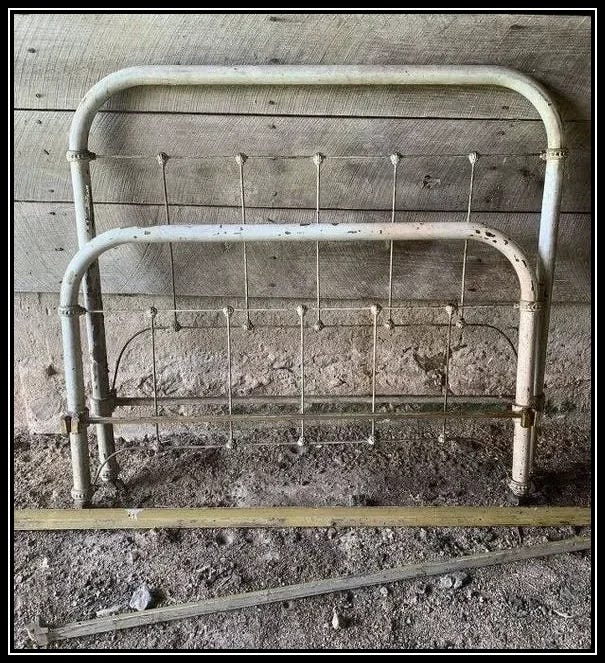
2.) Art Deco Style - Art Deco combines smooth finishes, sharp curves and a distinctive modern look. Heavy ornamentation around the distinctive lines was seen up until the Great Depression at which time sharp curves were replaced with rounded corners and heavy ornamentation was replaced with subdued heavy outlines.
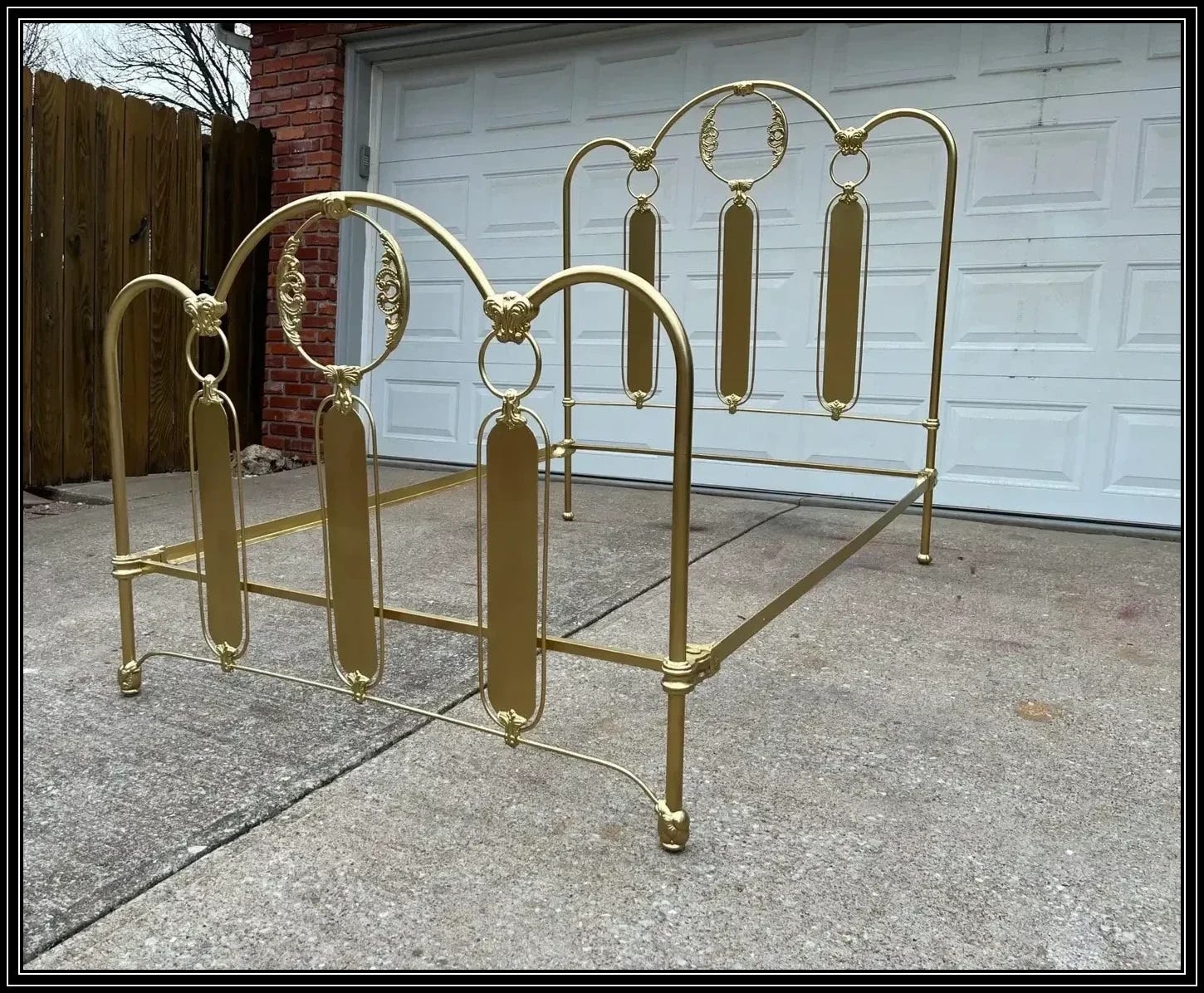
3.) Art Nouveau - With the onset of the Industrial Revolution in the late 1700’s creative handcrafting began to fall by the wayside. Machines were replacing actual workers. Finding this event tiresome and boring the Artists of this period began seeking ways to put life back into this revolutionized world. Thus was born “Art Nouveau” or for the more English speaking audience “New Born Art”. The basic design form for this period was the use of curved lines, much like those found in nature. In America the Art Nouveau era ran from the late 1800’s to the early 1900’s and most often associated with Louis Comfort Tiffany and his beautiful and extravagant glass works or the “Gibson Girl” with her starched yet fashionable appearance.
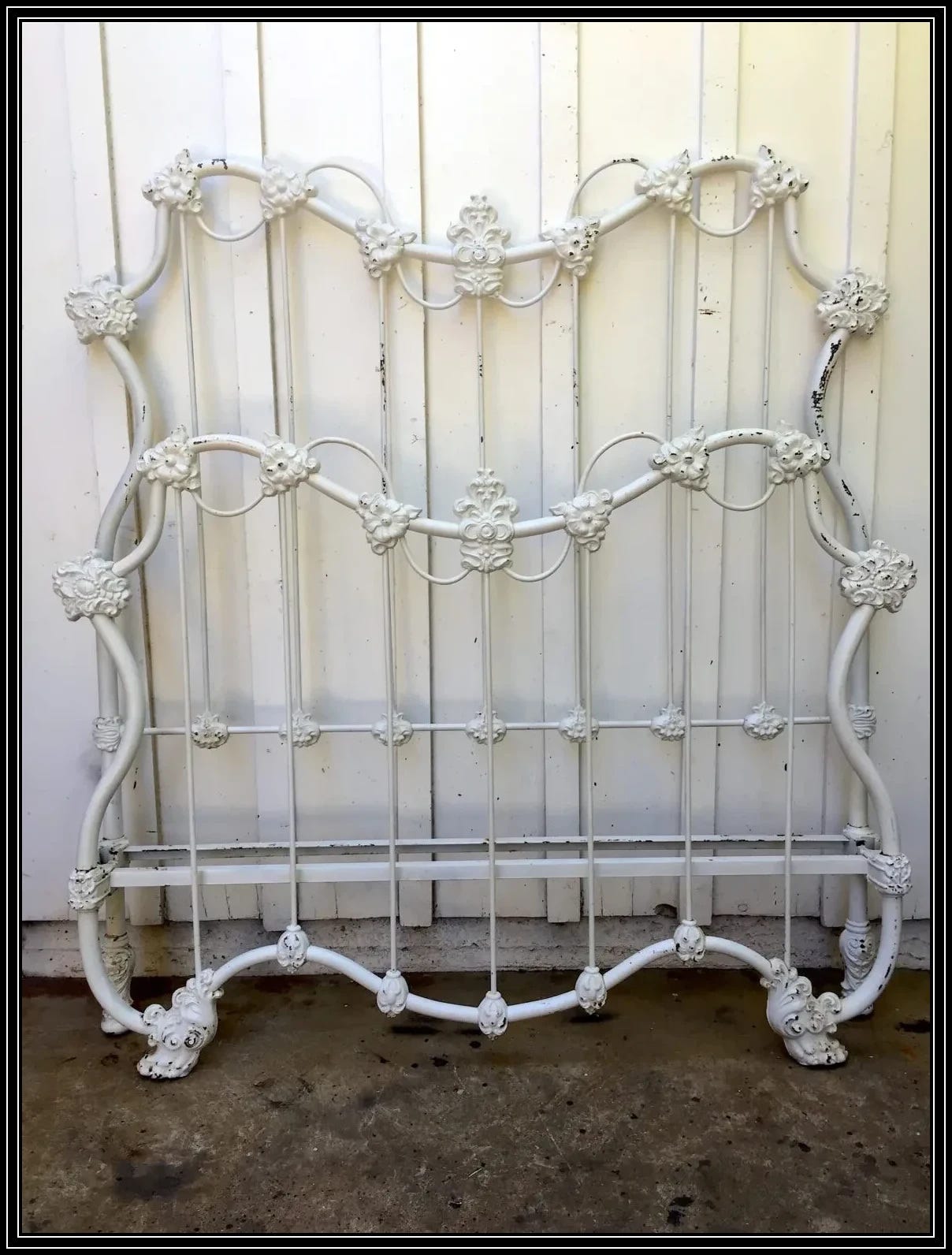
4.) Craftsman Style - The Craftsman movement was a direct result of the Victorian era and it’s extreme ornamentation. It began at the turn of the century and still carries influence in today’s modern environment.The Craftsman style put back the simplicity to life and replaced self absorption with self consciousness. It utilizes the sense of openness and space in conjunction with rustic boldness. It’s appearance by no means is simple.
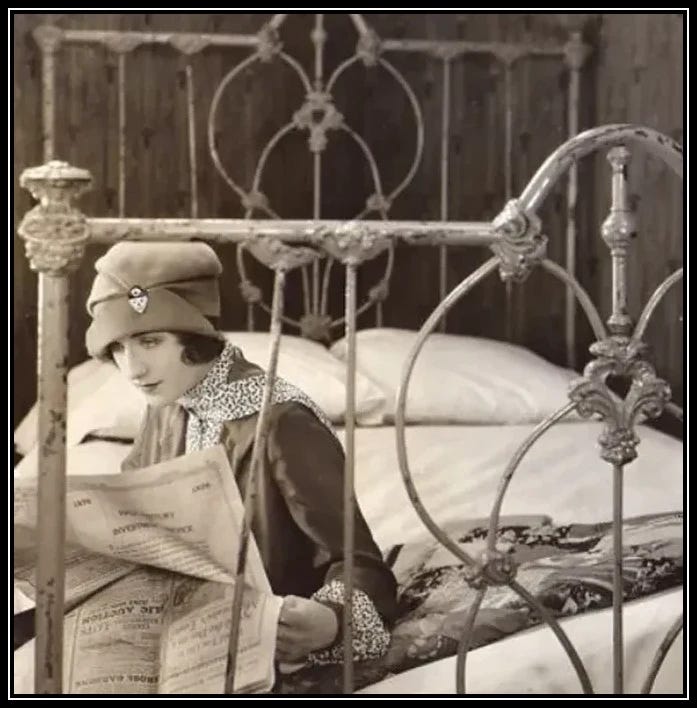
5.) Geometric Style - Considered to be a “New Era” style. Geometric designs have been a part of styles since Ancient Greece, Babylonia, and Egypt. These cultures used geometric shapes in their every day lives from their writings to the jewelry.During the Victorian era soft gently curves were used, while in the Art Nouveau period these curves were elongated and placed in more natural angles. The Art Deco period moved towards a more angular shaping, conversely the Craftsman era reflected more subtle and simplified shapes using tailored lines, rectangles and ovals.Geometric styles in the “New Era” can range from simple and quiet appearances to more complex and sometimes convoluted designs.
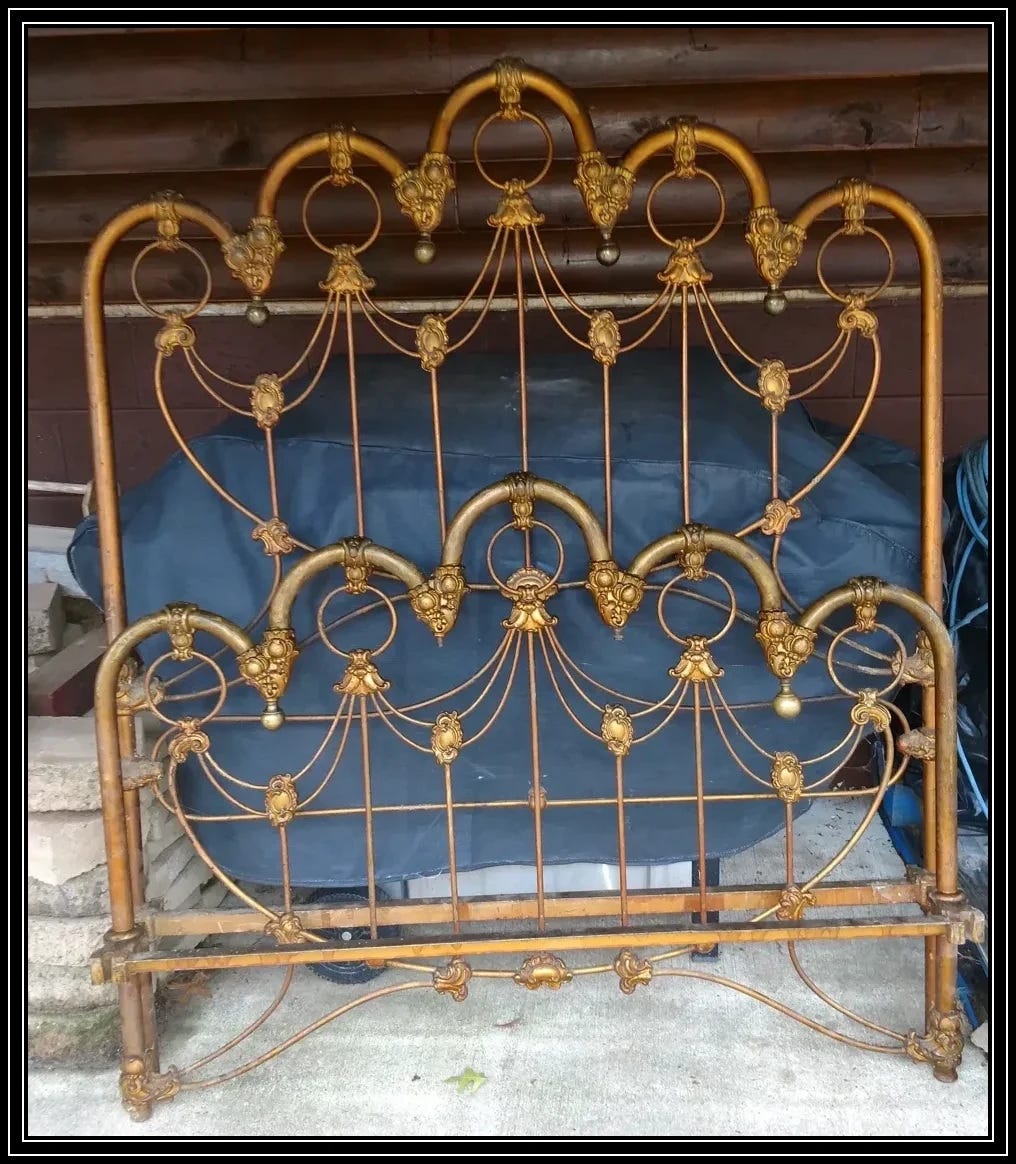
6.) Scrolling Style- Scrolling styles were derived from the Victorian era. This style captures the Victorian reflections of the curves of a woman’s body, thin and sleek, and are characteristically feminine. These frames are hard to find in the US and extremely rare.
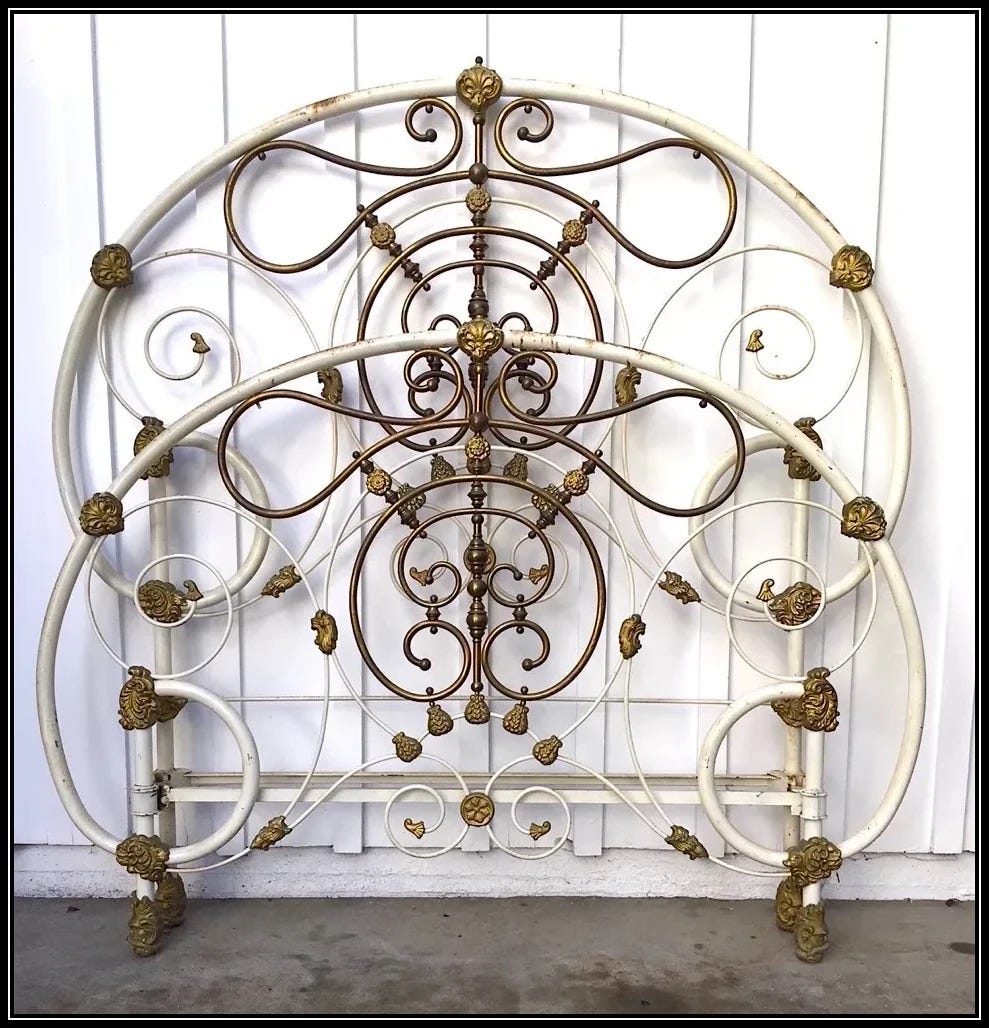
7.) Wedding Band Style - In the annals of furniture history, the antique iron “Wedding Band” style bed stands as a testament to timeless craftsmanship and enduring elegance. Evoking nostalgia for the opulent 19th century, this bed has cemented its place as a hallmark of the era’s artistic and functional expression. Its widespread popularity in the 1800s can be attributed to a combination of factors that not only reflect its aesthetic appeal but also shed light on the social and economic dynamics of the time. Origins of the “Wedding Band” Style Bed. The “Wedding Band” style bed derived its name from the distinctive circular motifs resembling wedding bands that adorned its headboard and footboard. This unique design element, often accompanied by intricate scrollwork and delicate detailing, encapsulated the romantic spirit of the Victorian era. With its graceful curves and robust iron construction, the bed embodied a harmonious blend of durability and refinement, making it a symbol of both practicality and sophistication.
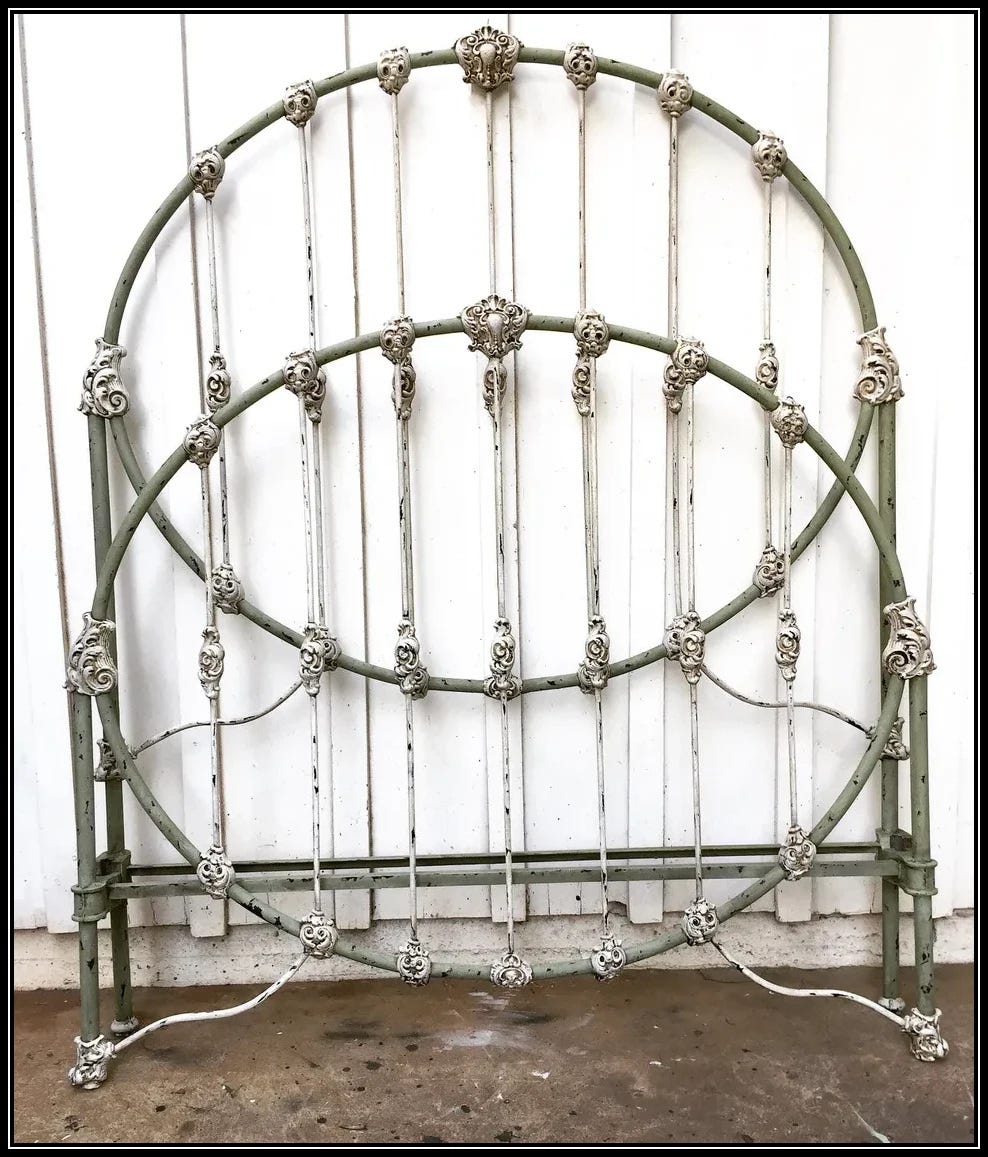
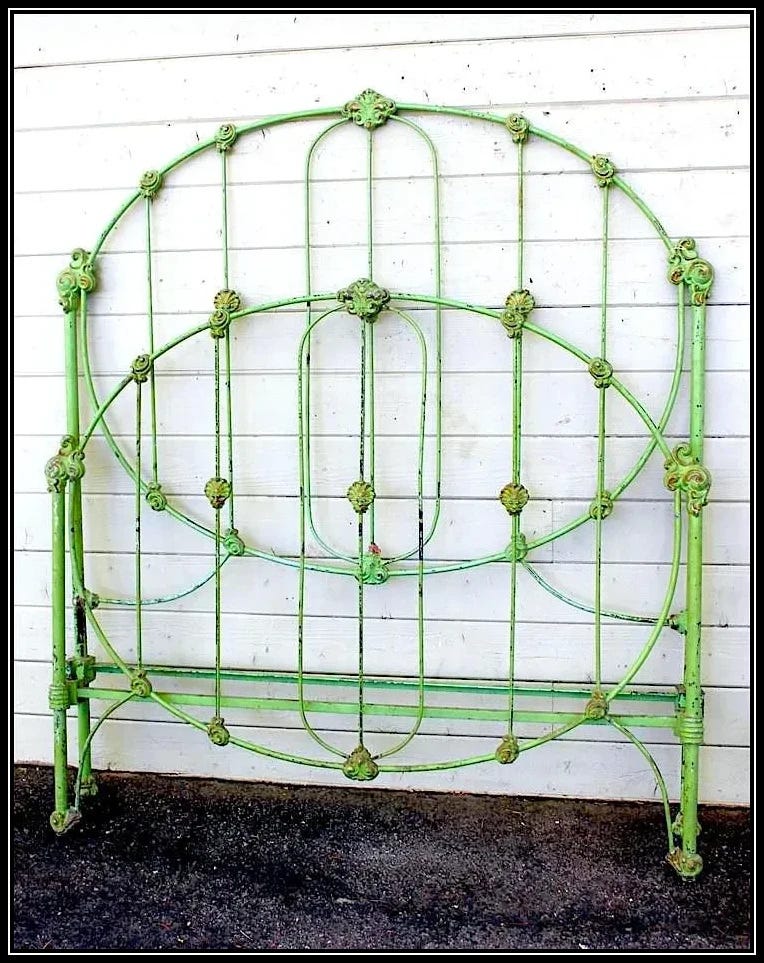
8.) Victorian Style - The Victorian era named for Queen Victoria of England, ran from the mid 1800’s to the turn of the century, which by the way coincides with her reign. It was a period of dramatic change; the beginning of the Industrial revolution, the movement from aristocracy to bourgeoisie and the onset of a new system called Capitalism. Considered to be extremely ornamental with romantic undertones, this style mixed natural and floral designs with soft gentle curves, much like the curves of a woman’s body. Color was also a significant factor, the era began with soft muted pastel colors, however by the end of the era the soft muted tones had changed to reflect more vibrance and saturation.
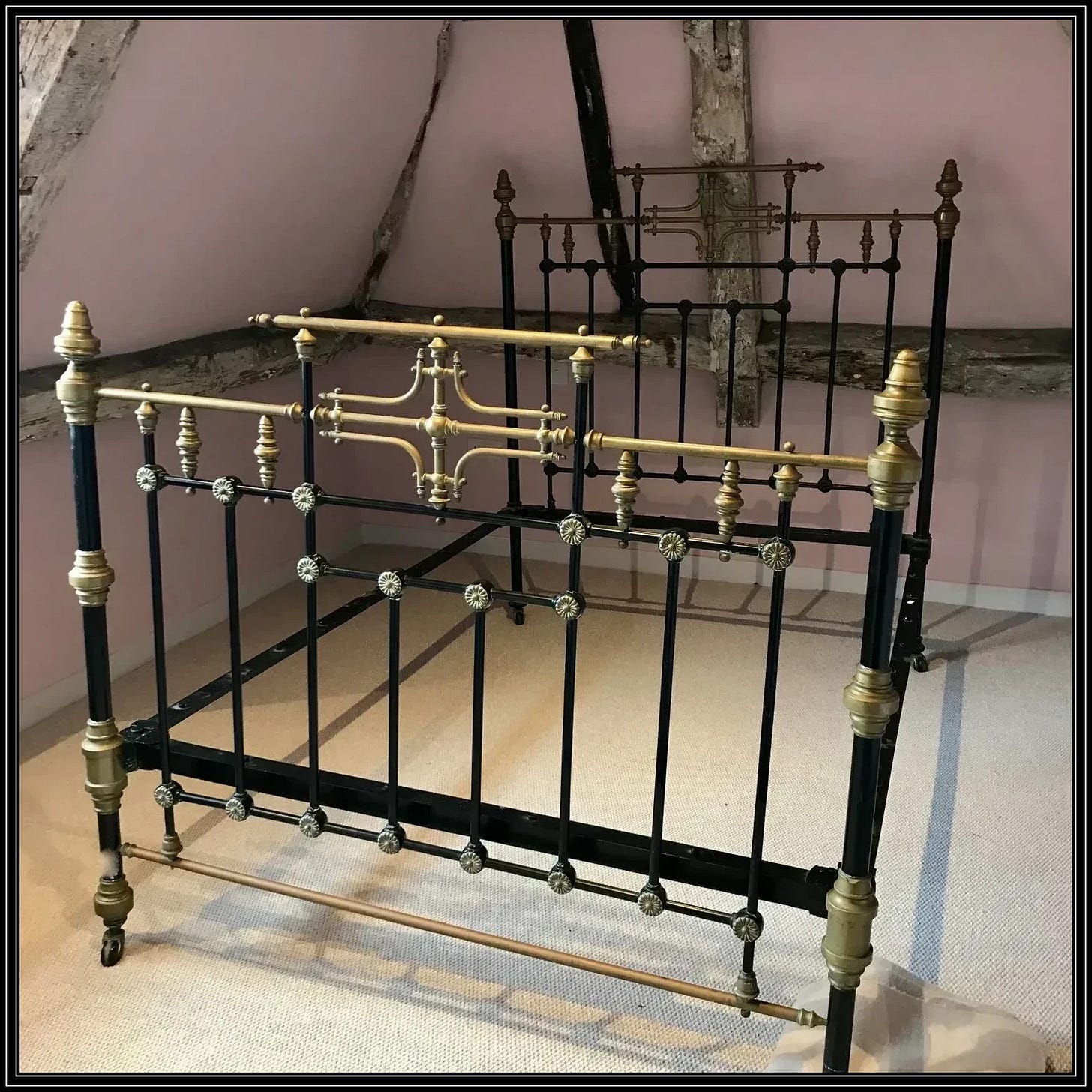
~Theresa Griffin Kennedy















Share this post